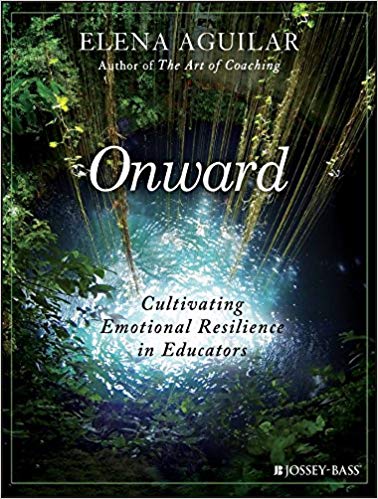As coaches, we work with a variety of people with a variety of perspectives, experiences and needs which leads to our need to be prepared for a wide variety of conversations.
Sometimes these conversations are ‘on the fly’ and unplanned. In other cases, we have an opportunity to have an intentional, focused discussion. No matter how formal or informal the conversation, as coaches we need to be aware of how we are approaching and participating in the conversations we are having.
Based on my experience with specific coaching training, researching and presenting on coaching conversations, discussions with other coaches, and coaching and mentoring others, I’ve found these are four important elements for effective coaching conversations: mindset, listening, paraphrasing and conversation catalysts.
Mindset
Mindset is is often implied or assumed in discussions about coaching conversations, but I think it needs to be addressed directly. When I refer to ‘mindset’, this definition sums it up best …
”a habitual or characteristic mental attitude that determines how you will interpret and respond to situations”. https://www.vocabulary.com/dictionary/mindset
As coaches, our beliefs and attitudes are key in how we will interact with teachers in an effective and positive manner and this will definitely impact the relationships we build and the conversations we have. If we don’t have beliefs and attitudes that support our colleagues, then it will be challenging to have productive and meaningful conversations with them.
No matter if it is an informal conversation during lunch or a planned conversation as part of coaching cycle, we need to consciously and consistently check our mindset. Our actions must reflect our beliefs and attitudes in our coaching role and our mindset is critical to the effectiveness of the other elements of a coaching conversation.
What are your beliefs as a coach?
Check out this Instructional Coach Self Assessment from Coaching Matters
Listening
"Most people do not listen with the intent to understand; they listen with the intent to reply." ~ Stephen R. Covey
With our mindset in check, we are ready to be open minded and focused on our colleague. It’s easy to start coming up with solutions and ideas or comparing their situation to one we’ve had, but wait…wait and listen to what they have to say. And we need to do more than just listen.
In Coaching Conversations: Transforming Your School One Conversation at a Time, Linda Cheliotes and Marceta Reilly refer to ‘committed listening’ which encompasses…
- Paying attention to verbal and non-verbal communication;
- Valuing silence;
- Avoiding unproductive patterns of listening;
- Listening without obligation to act.
We need to consider non-verbal communication cues such as body language and tone and listen with not just our ears, but with our eyes as well. We also need to give our colleague ‘wait time’ to give them time and encouragement to formulate and share their thoughts. We also need to be mindful of how we are listening. Even if we are valuing silence, what perspective are we applying to what is being said. Finally, we should not assume that we will be expected to give a response so that we can focus on what’s being said and not jump ahead.
Reflect on your own listening
Listening to Your Own Listening (from Onward: Cultivating Emotional Resilience in Educators by Elena Aguilar)
Paraphrasing
As we listen, we’ll occasionally want to paraphrase what we are hearing to check understanding (clarify) and to acknowledge what the person has communicated and let them know we are listening. Paraphrasing should not just be repeating back what we’ve heard but a summary – less is more. Paraphrasing can also help build trust by showing our colleague that we are sincere and engaged with what they are sharing. But be careful not to over use it!
I’ve found useful guidance on paraphrasing from both Robert Garmston (Cognitive Coaching & Adaptive Schools) and Steve Barkley (educational consultant and coach). They both approach paraphrasing as a listening skill, focused on emotion and thinking and used in combination with questions. (see links below) Barkley refers to “confirmatory paraphrasing” to clarify facts, feelings and opinions while Garmston recommends paraphrasing to acknowledge and clarify, summarize and organize, and shifting logical levels of the conversation.
(Note that both Robert Garmston and Arthur Costa (of Cognitive Coaching) warn against using the pronoun “I” in paraphrasing to keep the focus on the speaker.)
How can we be focused and intentional in our paraphrasing?
Coaches’ Listening Skills: Confirmatory Paraphrasing (Steve Barkley)
Raise the Level of Conversation by Using Paraphrasing as a Listening Skill (Robert Garmston)
Conversation Catalysts
“The purpose of the coaching conversation is to stimulate thinking, growth and change that lead to action.” ~ Linda Cheliotes and Marceta Reilly
The first three elements really focus on how we take in, clarify and acknowledge what our colleague is saying, verbally and non-verbally, but there will be points in the conversation where we need to participate productively in the conversation. This element, which I call conversation catalysts, is based on a combination of ways we contribute to a coaching conversation in the form of questions, sentence stems and feedback. We have to make decisions about the type of questions we ask or the feedback we give or how we begin a sentence based on what is needed to move the conversation forward. Our choices should depend on the person’s needs based on what they’ve shared with us.
The first step, as with all these elements, is self-reflection and awareness and then finding guidelines and frameworks that support us as we develop our craft as coaches. For conversation catalysts, Elena Aguilar provides examples of general, facilitative and directive sentence stems and questions which vary from clarifying and inquiry to supportive and even prescriptive stems. Those who’ve worked with Cognitive Coaching concepts and strategies can find conversation catalysts organized into three areas: planning, reflecting and problem-solving. And Cheliotes and Reilly refer to Powerful Speaking and Reflective Feedback. We can find many similarities among these different ways of organizing questions, stems and feedback in that they are based on the context and intention.
I’ve just briefly touched on these four elements of coaching conversations -mindset, listening, paraphrasing and conversation catalysts. Each needs to be discussed, studied and practiced in depth, especially how we incorporate all four to provide an opportunity for productive and meaningful conversations with our colleagues.
Below are a few resources that include information, strategies and even self-assessments regarding coaching conversations and I’d love your input on your approach to coaching conversations, recommendations for resources and ideas and anything else coaching related.
Recommended Resources
Opening the Door to Coaching Conversations and Coaching Conversations: Transforming Your School One Conversation at a Time by Linda M. Gross Cheliotes and Marceta F. Reilly
The Art of Coaching: Effective Strategies for School Transformation by Elena Aguilar
Coaching Conversation Analysis Tool [Listening, Questioning, Giving Feedback, Non-Verbal Communication] and Coaching Sentence Stems (from The Art of Coaching/Coaching Tools)
Coaching Tools from Bright Morning (Elena Aguilar)
Diana Beabout
We love sharing great content! Choose the best mailing list for you.
COACHES
RESOURCES
Coaching Resources
MICROCREDENTIALS
The Coach
TEACHERS
RESOURCES
All Resources
MICROCREDENTIALS
COETAIL
Connected Teacher
PARENTS
Balance Your Family’s Digital Lives (FREE Resource)
eBook (pre-order)



0 responses on "Elements of Coaching Conversations"